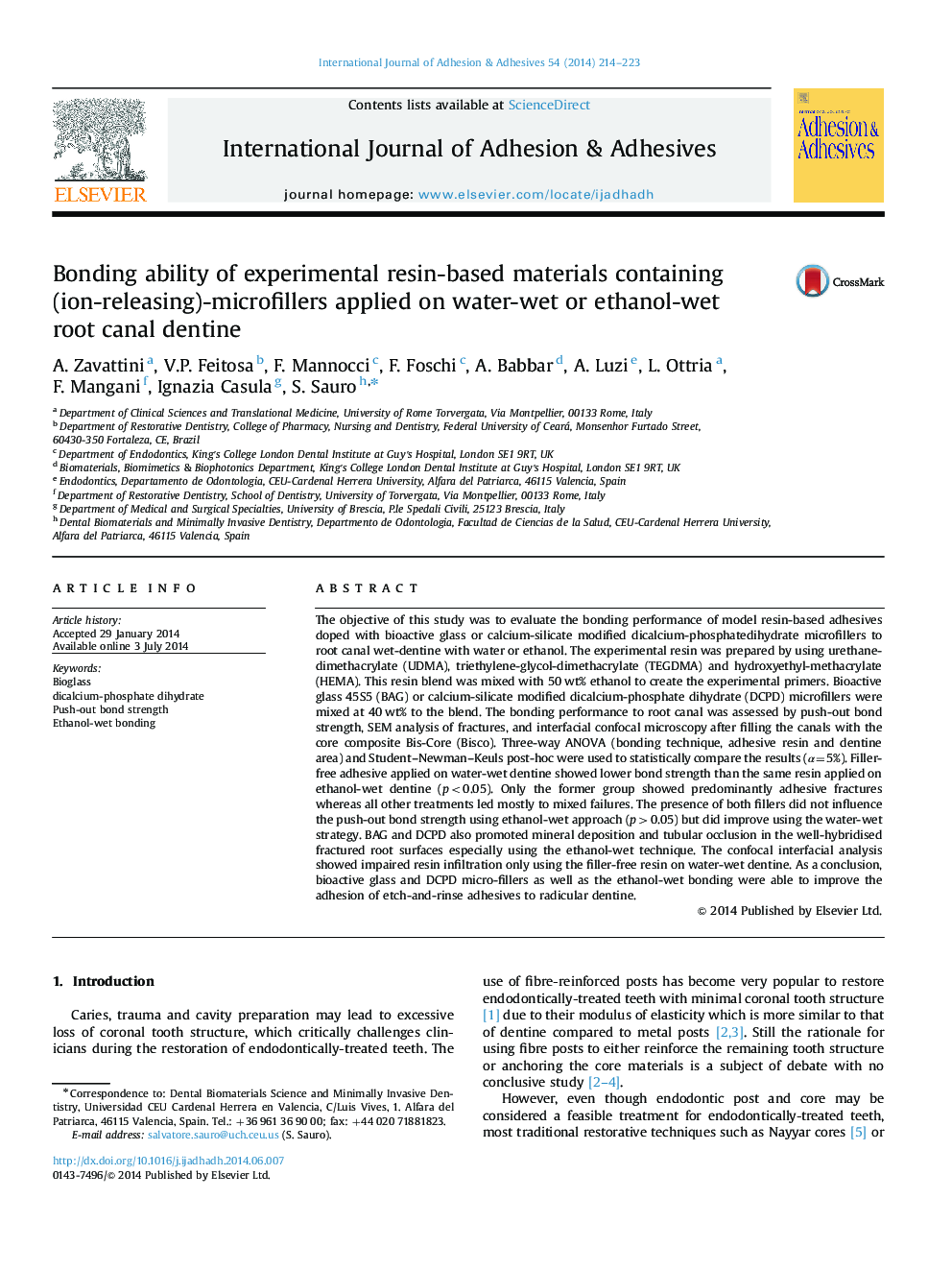| کد مقاله | کد نشریه | سال انتشار | مقاله انگلیسی | نسخه تمام متن |
|---|---|---|---|---|
| 7171143 | 1463483 | 2014 | 10 صفحه PDF | دانلود رایگان |
عنوان انگلیسی مقاله ISI
Bonding ability of experimental resin-based materials containing (ion-releasing)-microfillers applied on water-wet or ethanol-wet root canal dentine
ترجمه فارسی عنوان
قابلیت اتصال به مواد آزمایشگاهی مبتنی بر رزین حاوی (یون آزاد کننده) میکروکنترلرها بر روی رطوبت و رطوبت با اتانول
دانلود مقاله + سفارش ترجمه
دانلود مقاله ISI انگلیسی
رایگان برای ایرانیان
کلمات کلیدی
بیوگرافی، دی کالیسیک-فسفات دی هیدرات، استحکام باند کششی، پیوند ملایم اتانول،
موضوعات مرتبط
مهندسی و علوم پایه
سایر رشته های مهندسی
مهندسی مکانیک
چکیده انگلیسی
The objective of this study was to evaluate the bonding performance of model resin-based adhesives doped with bioactive glass or calcium-silicate modified dicalcium-phosphatedihydrate microfillers to root canal wet-dentine with water or ethanol. The experimental resin was prepared by using urethane-dimethacrylate (UDMA), triethylene-glycol-dimethacrylate (TEGDMA) and hydroxyethyl-methacrylate (HEMA). This resin blend was mixed with 50 wt% ethanol to create the experimental primers. Bioactive glass 45S5 (BAG) or calcium-silicate modified dicalcium-phosphate dihydrate (DCPD) microfillers were mixed at 40 wt% to the blend. The bonding performance to root canal was assessed by push-out bond strength, SEM analysis of fractures, and interfacial confocal microscopy after filling the canals with the core composite Bis-Core (Bisco). Three-way ANOVA (bonding technique, adhesive resin and dentine area) and Student-Newman-Keuls post-hoc were used to statistically compare the results (α=5%). Filler-free adhesive applied on water-wet dentine showed lower bond strength than the same resin applied on ethanol-wet dentine (p<0.05). Only the former group showed predominantly adhesive fractures whereas all other treatments led mostly to mixed failures. The presence of both fillers did not influence the push-out bond strength using ethanol-wet approach (p>0.05) but did improve using the water-wet strategy. BAG and DCPD also promoted mineral deposition and tubular occlusion in the well-hybridised fractured root surfaces especially using the ethanol-wet technique. The confocal interfacial analysis showed impaired resin infiltration only using the filler-free resin on water-wet dentine. As a conclusion, bioactive glass and DCPD micro-fillers as well as the ethanol-wet bonding were able to improve the adhesion of etch-and-rinse adhesives to radicular dentine.
ناشر
Database: Elsevier - ScienceDirect (ساینس دایرکت)
Journal: International Journal of Adhesion and Adhesives - Volume 54, October 2014, Pages 214-223
Journal: International Journal of Adhesion and Adhesives - Volume 54, October 2014, Pages 214-223
نویسندگان
A. Zavattini, V.P. Feitosa, F. Mannocci, F. Foschi, A. Babbar, A. Luzi, L. Ottria, F. Mangani, Ignazia Casula, S. Sauro,
